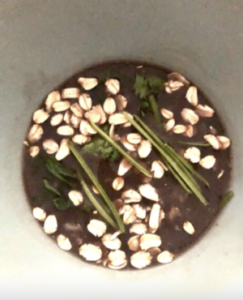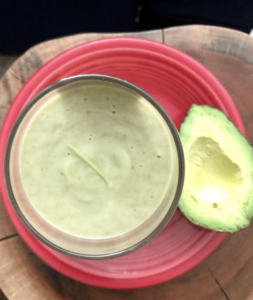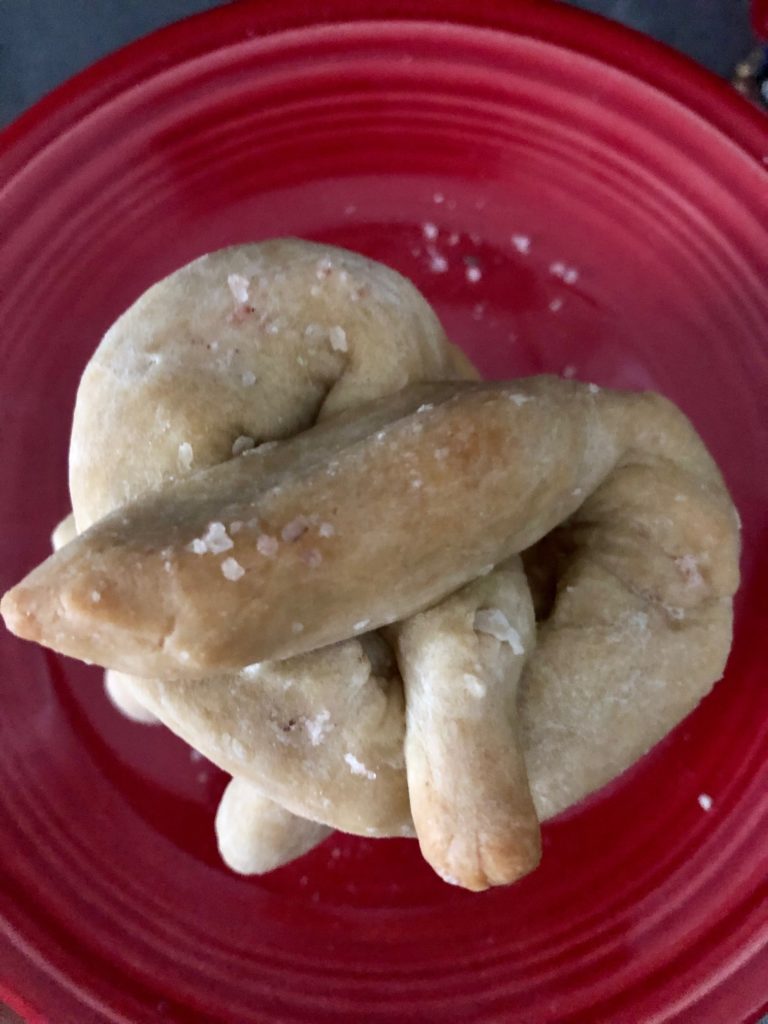Healthy baker recipes can be inspired by shows like The Great British Bake Off. And I share a healthy phyllo dough recipe for baklava below. Yes, you can make your own and have fun! 🤩
It’s no secret that 1) I’m a healthy baker, so I wanted to share some of my tips this week below. And 2) I’m a huge fan of The Great British Bake Off (or Baking Show). I’m loving this season’s debut and I especially love the baker’s use of unusual flavors and creative designs shown off under the big white tent so far.
It’s always fun to laugh along at Noel’s unicorn jokes and rainbow outfits. And to hear the judges pronouncing oregano like origami (I’ll never look at my spices the same again 😁)… or calling tacos like calling a taxi (…wait a New York minute, how did corn flour tortillas get in this past week’s technical challenge?)
Both are a sign that popular international foods and ingredients are making their rounds besides in tortillas. Plus, fruit shortages and inflation have us creatively sourcing foods and collaborating, which are helping to save our planet.
And being able to make your own anything anywhere is helpful, so you don’t feel helpless and rely on the world to produce. Thinking like a creative baker (or cook) is a helpful skill these days.
…And blends well with an anti-inflammatory diet full of healthy food ingredient variety, where you can lean into seasonal plant-based foods spanning the globe.
I look for international food sources that are everywhere and cropping up in leaps and bounds. Daily, the Earth is revolving AND evolving its own sustainable foods that we can appreciate especially in local gardening or farmer markets. So, be expectant for food births of new kinds 🍓
And actually… I picked up my own local international flavor combinations with fresh blackberries, and chokeberry-prune purees, as I work my way into fall (… both my feet aren’t into the pumpkin season just yet 🎃).
I did get some blackberries squirted in my eye… but luckily no black eyes, as that would make it a challenge to make this week’s cinnaroll full of Ceylon and cassia cinnamon for anti-inflammatory sweetness 😊

…When I was growing up, kiwifruit was considered an exotic fruit that today is as common as year-round pineapple juices.
And when I come across 2 sticks of butter or a cup of sugar in a cookie or pastry recipe, it reminds me of my younger years. These days, I tend to steer away (…as growing up will do that to you!) and find healthy substitutes for both mind and body.
I’m a sugar lover by nature (most of us Vatas are) and I remember when I was a child and I would reach into the sugar jar (for baking of course!) and help myself to a few daily teaspoons of refined sugar. That set me on the path to an adult sweet tooth where I needed daily sweets to keep me going…
Despite sugar making more than just news feeds… the fact is that it’s also feeding the bad bugs in the gut.😏
And individually we all get body warnings from our skin and health symptoms. Everyone is different. So, for me, I can enjoy a couple of Twizzlers and be better off than a few squares of chocolate. God put the Twizzler makers on the earth for a reason 😉
And for you, it could be something else. And certain fruits or ingredients can throw others off. It’s good to be discerning and a little picky this way.
If you want to know what your body is trying to tell you through its daily symptoms, take the minute-and-a-half Body Balance Quiz and then take it again next season and compare the result.
So now that we got the body squared away, here are my healthy good-mood baking tips this week from me, the healthy baker…
First of all, some of us are messy bakers that can be part of the fun, and others of us are neat bench bakers. Whatever you think you are, it’s all good! 👍
I tend to be a planner and a neat healthy baker cleaning up as I go, so my tips come from that POV and can help you if you want to lean more into that.
Either way, you can still bake up a storm and change your bakes at the last minute. Why? For creativity, and for the purpose of using baking to relax. …That can be a new reason to bake!
Oh, aannd if you’re a baking show addict, I’ve added some highlighted inspo from the Great British Bake Off… and hope I don’t come across too cheeky! 😉
So here we go!
Baking Prep Inspo Tips:
1. Read your recipe and know the ingredients you need before the baking day so you know what you need to get from the store at least a day ahead.
2. Prepare what you will bake in the morning and then bake later in the day. Healthy baker or not, often doughs need time to rest or rise (…sounds a lot like us peeps).
And I can’t tell you how many times I’ve forgotten to take the eggs out early enough so they warm up. And if eggs are your way of giving a shine to your bakes, that’s critical because egg whites and yolks mix together better at room temperature.
3. And if you pull out your tools that you’ll need, early in the day, you can rinse off and allow enough time to dry out, so you don’t have to do drying, prepping, and baking together which can feel like a real chore and take the fun out of baking.
And especially if you need to concentrate on counting your layers for lamination and making sure there’s not a drop of moisture that can affect your temperamental meringues.
4. Bring out a convenient bowl or plate for all your used baking tools and baking trash so you don’t have to think so much. Ah, baking can be relaxing (when it’s not in the tent)!
5. Keep a damp towel or a few moist paper towels nearby so you can use them whenever you need to wipe your hands or any fun spills… or when you need to reach for your phone or swipe to your recipe.
6. Read your recipe a second time and then mark the dry ingredients and wet ingredients and write any notes you have. Then pull out the ingredients for baking.
…OR, If you’re not using a recipe, jot down what you need for your bake vision, and bring out the visual ingredients. Visual is also good for illusion bakes that the GBBO contestants often have to whip out! 🪄
When you’re using healthy baker ingredients, you especially want to use the most useful tool you have… your pair of eyes 👀 as a double check. Is the dough or batter too thick, thin or moist, or what do you need to add? If you use gluten-free flours they tend to collapse easily.
7. For many sweet or bread bakes, I like to add the flour first to see how much water, other liquid, or moist ingredients are needed.
After the dry and wet, I add leavening agents last to optimize rise if it’s a cake or bread. Plus then you are less likely to forget, as now that’s Step 3 (e.g. dry, wet, and then leavening agent). That’s just the way this healthy baker found works best for “experimental” bakes.
Baking doesn’t always go as planned in the oven and depending on the weather. Chemistry in the kitchen can be tricky.
8. While a whisk looks fancy and is one of my favorites (good chemistry there), it’s only good to use sometimes, as most of the time it’s not a good tool to use and is more of a hassle than its worth.
When to use a whisk: fluffing or whisking eggs, dry ingredients OR wet ingredients, but not both (like more flour than wet) that can make a sticky mess on your whisk. You can replace with a silverware spoon instead… or you’ll be spending time cleaning your whisk and risk a claggy bake (that Prue would point out and you wouldn’t want to inadvertently glue Paul’s mouth). 😁
9. For multi-layer cakes, weigh your flour in grams (instead of measuring cups if you can) and then you can help prevent uneven lopsided cakes. The Brits have it right and as GBBO Prue and Paul like to say at judgment time, “it’s a bit wonky.” 😉 …or “it’s on the lean” like a Leaning Tower of Pisa cake.
Oh and if it’s a Printzregententorte Cake that most of us can’t pronounce (and barely fits written on one line), you don’t want to leave each layer to chance.
If you’re not a GBBO watcher, that was one of Judge Prue’s technical challenges last season when Judge Paul counted all the missing layers. 🍰 Now you’re up to speed on the show. 📺
10. For recipes that have you separate dry and wet ingredients before mixing, it’s best to keep the salt away from the leavening agent (e.g. bicarbonate/baking soda, baking powder, or yeast). This can be easier to do if you follow tip# 7. Think of the flour as the soil and you want to add your other ingredients to different parts of the soil.
11. Clean your bowls and tools as you wait for your desserts to rest or bake. That way when you’re done, you reward yourself with your dessert like you’re a guest and not the dishwasher.
.12. Use your your oven light and timers to visually see and not forget. Depending on how much time you have (or how patient you are), low and slow can prevent soggy bottoms (that I don’t need to mention are a big no-no in the tent).
13. I like to use long toothpicks to test baked doneness, but like Prue pointed out in one past episode, you could run into a piece of fruit and be deceived. My alternate way to test is to add a sample-size bake appetizer on a (or the) baking tray. And if the sampler isn’t done, then you know the prized bake is not likely to be either.
So… that’s a wrap or the end of the cling film for this healthy baker this week (…sorry, I couldn’t resist!)
I’ll stick to my job of cheering the contestants on! 🎉
And if you want to learn to make your own phyllo dough that was laughed in one GBBO episode, it’s more fun than a hassle.

Easy Phyllo Dough For Baklava Dessert (Mediterranean Olive Oil Healthy)
Ingredients
- 2 tbsp olive oil
- 1 cup flour
- 1 cup water
- pinch of salt
- honey
- chopped nuts
- dates, orange, and cinnamon (optional)
- additional bench flour (to prevent sticking)
Instructions
- Making phyllo is a lot like making homemade pasta, but much thinner.
- Make a mound and a hole in the middlle where you can add the olive oil and slowly add water. Knead for about 5 minutes and then form a dough disc. Let rest.
- Roll out as thin as possible and then you can slip into the pasta maker if you have one, adjusting until you get to the thinnest setting (e.g. 1). It will look opaque but the hope is that there will be no holes.
- Cut into strips that you will use as layers for the baklava.
- For the baklava, you can brush honey and top with chopped dates and nuts (walnuts or pistachios work well) on every other layer if you make 7 layers ending with the top layer with honey and nuts. Sprinkle each layer with cinnamon and orange zest if you like (good for Ayurvedic Vata balancing!).





























